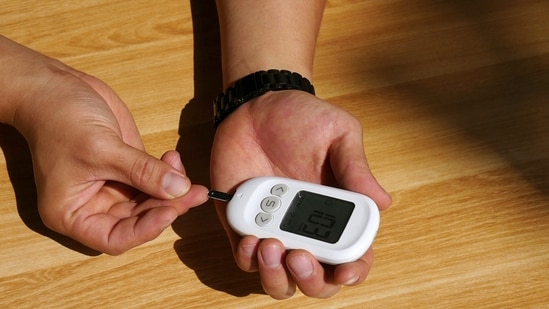Blood
Postprandial Blood Sugar: Tips to manage post-meal blood sugar, all you need to know
Diabetes experts reveal all about Postprandial Blood Sugar – ways to measure post-meal blood sugar, what different results may indicate and tips to manage it
Postprandial blood sugar, also known as post-meal blood sugar, refers to the level of glucose in the blood after consuming a meal so monitoring postprandial blood sugar is essential for individuals with diabetes, as it provides valuable information about how the body responds to different foods and helps in managing blood sugar levels effectively. Read on as we delve into postprandial blood sugar levels, tests used to measure it, what the results reveal and expert tips to manage it.
Postprandial Blood Sugar Levels:
In an interview with HT Lifestyle, Dr Vigyan Mishra, Chief of Lab at Neuberg Diagnostics, said, “Normally, blood sugar levels rise after eating and then gradually decline as the body uses the glucose for energy or stores it for future use. For healthy individuals, postprandial blood sugar levels should typically stay below 140 mg/dL (milligrams per deciliter) two hours after a meal. However, for individuals with diabetes, these levels can be higher, indicating difficulties in regulating blood sugar.”
Postprandial Blood Sugar Tests:
According to Dr Vigyan Mishra, there are two primary methods to measure postprandial blood sugar levels –
- Fingerstick Blood Sugar Test: This is a simple and common test that can be performed at home. A person pricks their finger using a lancet to obtain a small blood sample and then uses a glucose meter to measure their blood sugar level. The test is usually done before eating (fasting blood sugar) and again one to two hours after the start of a meal to measure postprandial blood sugar.
- Oral Glucose Tolerance Test (OGTT): This test is often conducted in a medical setting. The person fasts overnight, and their fasting blood sugar level is measured. Then, they consume a specific amount of glucose solution, and blood sugar levels are monitored at regular intervals, usually at one hour and two hours after consuming the glucose solution. This test is more comprehensive and can help diagnose diabetes or prediabetes.
What Results Reveal:
Asserting that interpreting the results of postprandial blood sugar tests is crucial for individuals with diabetes and their healthcare providers, Dr Vigyan Mishra revealed what the different results may indicate –
- Normal Postprandial Blood Sugar: For individuals without diabetes, a postprandial blood sugar level below 140 mg/dL (or below 7.8 mmol/L for countries using the metric system) after two hours is considered within the normal range. This suggests that the body is efficiently managing glucose levels.
- High Postprandial Blood Sugar: A postprandial blood sugar level exceeding 200 mg/dL (or 11.1 mmol/L) after two hours may indicate poorly controlled diabetes. Consistently high post-meal blood sugar levels can increase the risk of diabetes-related complications over time.
- Prediabetes: If the postprandial blood sugar level falls between 140 mg/dL and 199 mg/dL (7.8 mmol/L and 11.0 mmol/L), it may suggest prediabetes. This condition means the individual is at increased risk of developing type 2 diabetes and other health issues.
- Gestational Diabetes: Pregnant women may undergo an OGTT to diagnose gestational diabetes. Elevated postprandial blood sugar levels during pregnancy can pose risks to both the mother and the baby.
Managing Postprandial Blood Sugar:
Bringing his expertise to the same, Dr Shrey Srivastav, Assistant Professor, Internal Medicine at Sharda Hospital in Greater Noida, insisted that for individuals with diabetes, managing postprandial blood sugar is essential to prevent complications and maintain overall health. He recommended some strategies –
- Balanced Diet: Consuming a balanced diet with appropriate portions of carbohydrates, proteins, and fats can help stabilize blood sugar levels after meals.
- Regular Exercise: Physical activity can improve insulin sensitivity and aid in regulating blood sugar levels.
- Medication: Some individuals may require diabetes medications or insulin therapy to control postprandial blood sugar effectively.
- Stress Management: Stress can influence blood sugar levels, so practicing stress-reduction techniques can be beneficial.
Monitoring postprandial blood sugar levels is crucial for individuals with diabetes to manage their condition effectively. The tests help identify how the body responds to different foods and aid in making necessary lifestyle changes and medication adjustments.
By understanding and managing postprandial blood sugar, individuals can reduce the risk of complications and improve their overall quality of life. Regular communication with healthcare providers is vital in achieving optimal blood sugar control.

